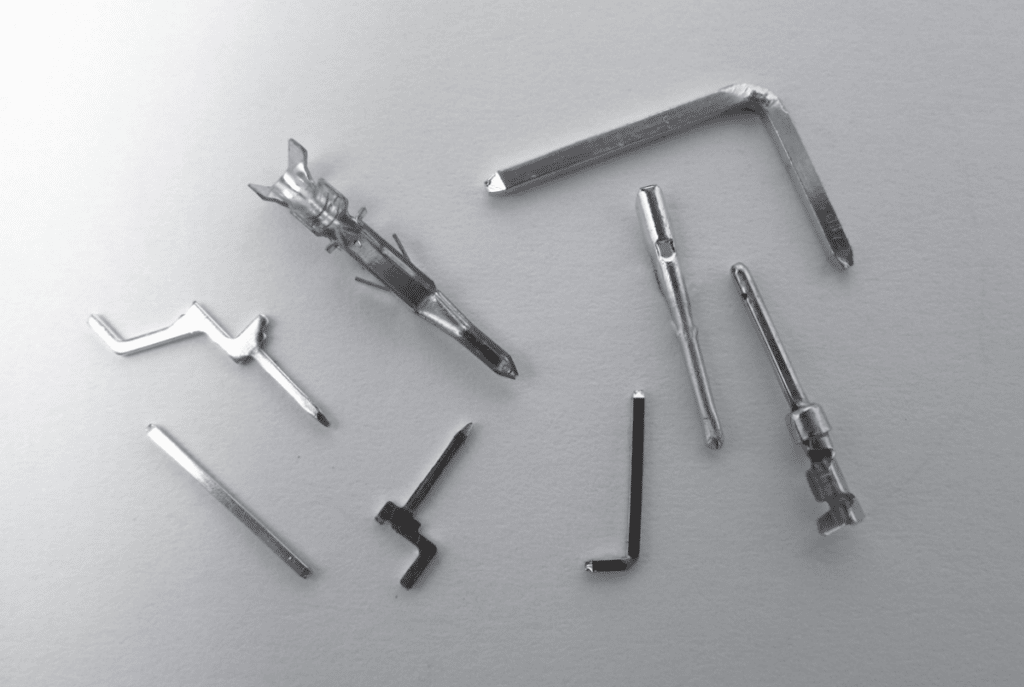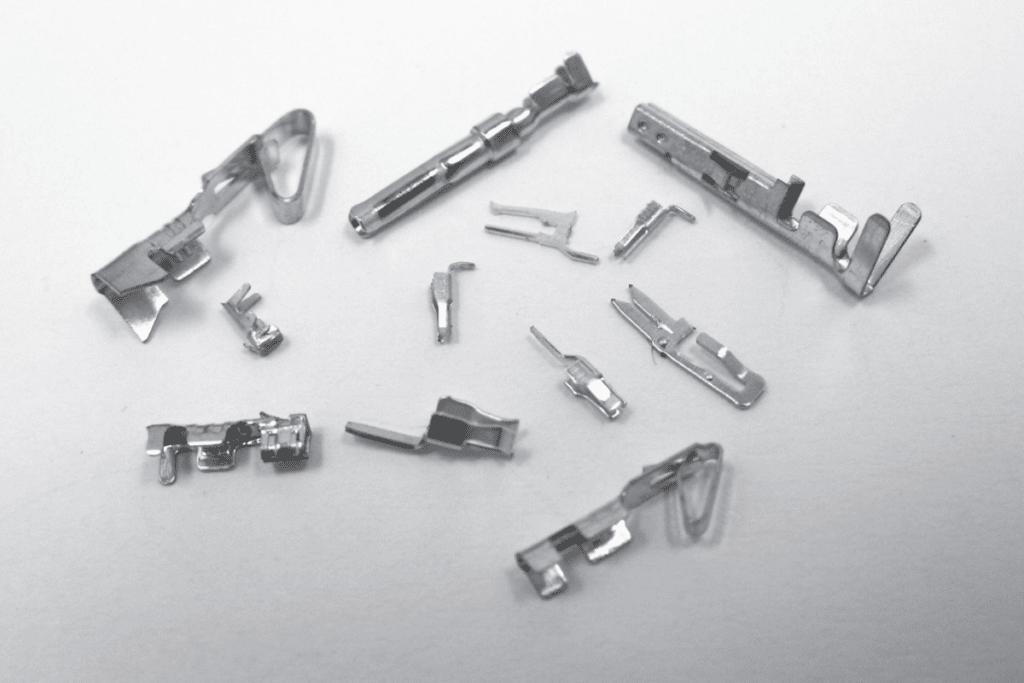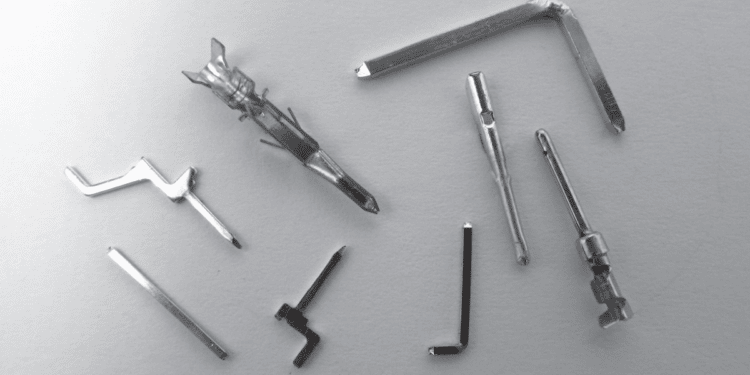Recall the functional definition of a connector from Chapter I/1.1 Connector Function.
A connector is an electromechanical system which provides a separable connection between two subsystems of an electronic device without an unacceptable effect on the performance of the device.
A connector is an electromechanical system in that it creates an electrical connection by mechanical means. Recall that there are two halves in a connector, a plug half, Figure 2.16 and a receptacle half Figure 2.17 as previously discussed in chapter I. Recall also that deflection of the receptacle contact spring by the plug on mating of the connector develops a contact normal force that creates and maintains the integrity of the metal-to-metal contacts at the separable contact interface. This is arguably the most demanding requirement for the contact springs due to the many, and sometimes conflicting, functions of contact force due to the separability requirement.


The contact springs must also have a balance of mechanical strength and formability to enable the creation of mechanical permanent connections between the connector and the subsystems being connected. These include crimped and insulation displacement connections to wire and cable and press-in connections to plated through holes in printed wiring boards. This chapter will discuss design and materials requirements for both separable and permanent connector contact interfaces.



















